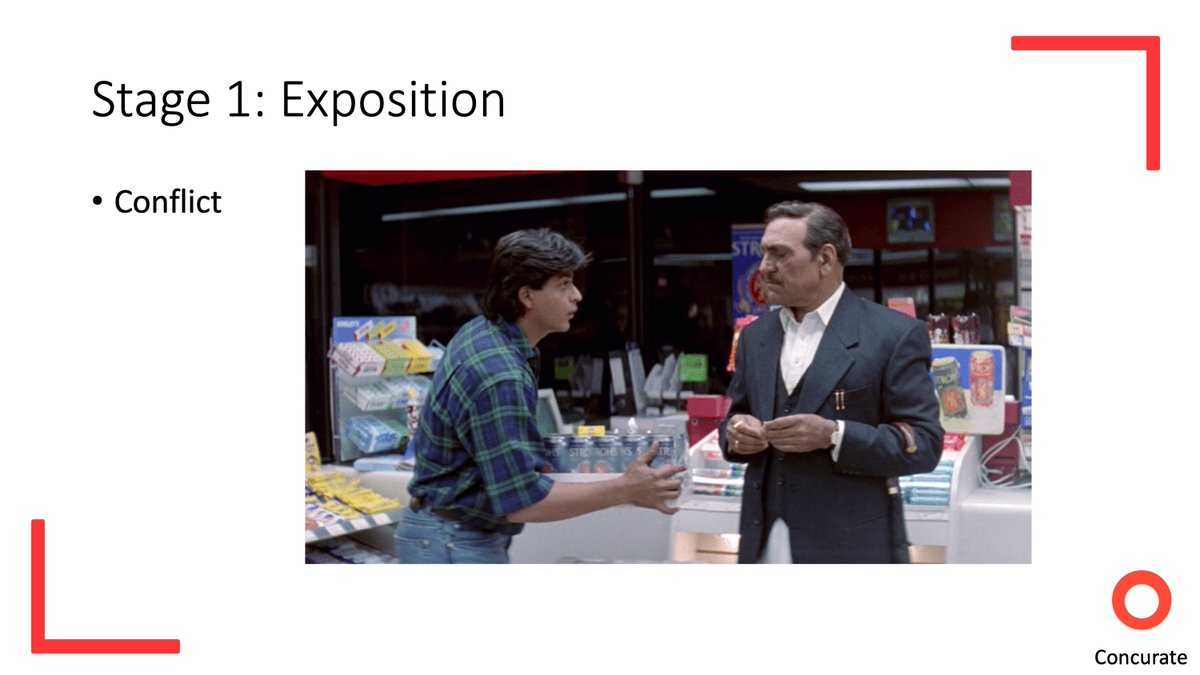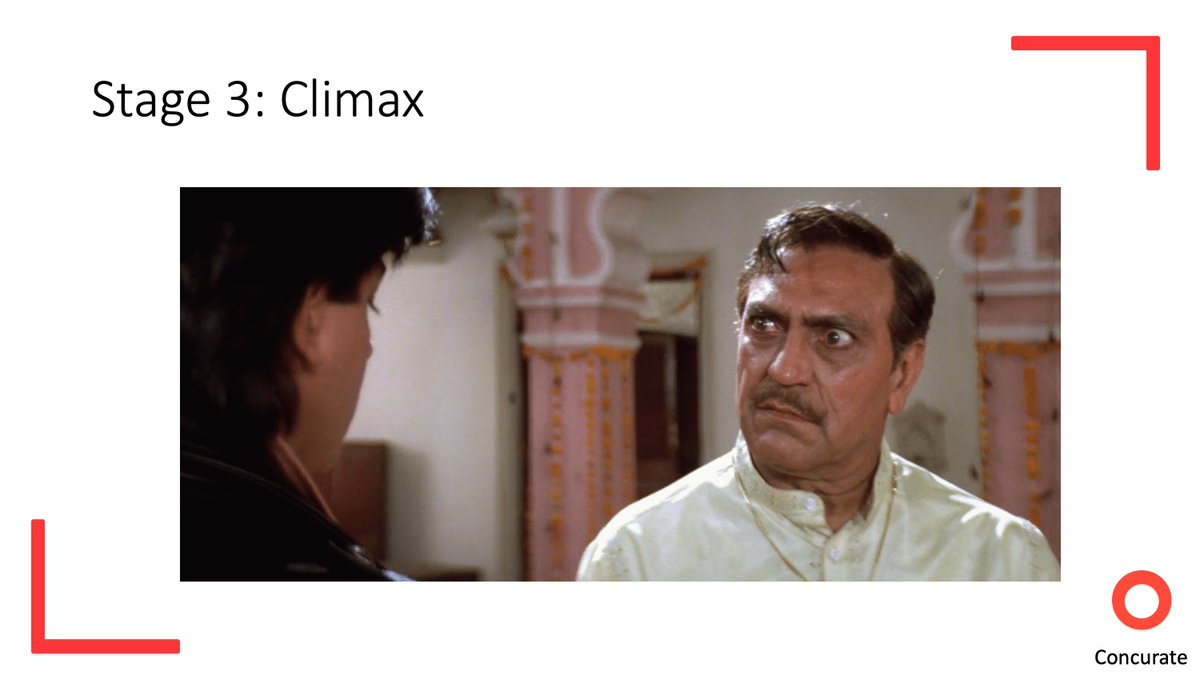
Kickass #Storytelling Made Easy,
with legendary #Bollywood movie @DDLJ.
Dig in to discover the framework:
with legendary #Bollywood movie @DDLJ.
Dig in to discover the framework:

Main #Character: Raj - A happy-go-lucky college lad who doesn't take anyting seriously 

#Setting: Comes from a rich family, single dad, father also who is unexpectly proud at his son's failing at graduation 

#Conflict: There need to be two opposing forces in a story to make hero a hero. In the moview DDLJ, the conflict was between traditional family values v. modern family values. Raj v Simran's dad. It's necessary to show Villain equal or stronger than hero. 

Also, the trailer of villain's strength should be shown in exposition stage itself. as shown with beer stealing incident in the movie.
#Conflict Momentum. There need to be a sequence of events to show conflicting nature of 2 forces. The movie does a great job at this by showing two parallel yet exactly opposite worlds. 

World 1: Raj's world, easy going, open, more freedom less discipline
World 2: Simran's world, highly disciplined, less freedom, whatever the head of family decides only that happens
World 2: Simran's world, highly disciplined, less freedom, whatever the head of family decides only that happens

Raj wants to get married to Simran. He attempts but fails. Everytime he fails, he gains audience's empathy. 

When villain's wife approves of Raj and says Simran's dad would never approve of it. The purpose is to show how strong the villain is. (kyunki maza tou tabhi aayega jab hero tagde villain ko harayega) 

Stage 3: When Simran's dad discovers about Raj and Simran's affair. And, Sharukh khan leaves without Simran, apologising to everyone. 

The fight that happens at railway station. The more Raj sheds his blood, the more empathy he gains from audience. 

Simran's dad lets Simran go with Raj with an epic dialogue - "Jaa Simran Jeele Appi Jindagi". Ultimately the hero managed to resolve the conflict and win over such a strong villain. 

@karanjohar did a wonderous job to the plot and direction! @DDLJ is legendary. We can always draw inspiration from great works.
Need #Storytelling to level up your #contentmarketing
We are just a call away!
concurate.com/contact/
Need #Storytelling to level up your #contentmarketing
We are just a call away!
concurate.com/contact/
• • •
Missing some Tweet in this thread? You can try to
force a refresh








